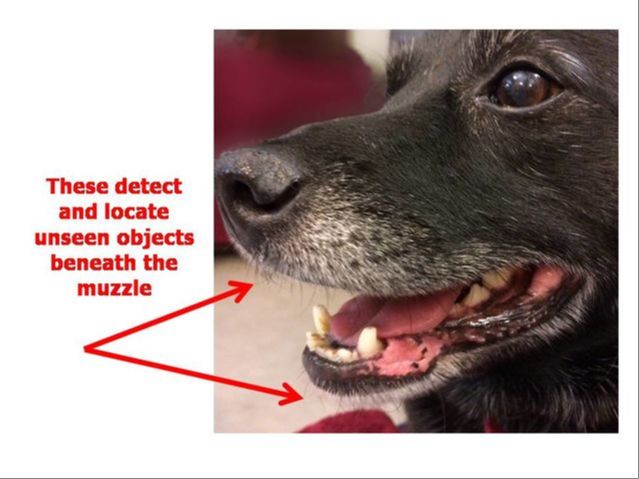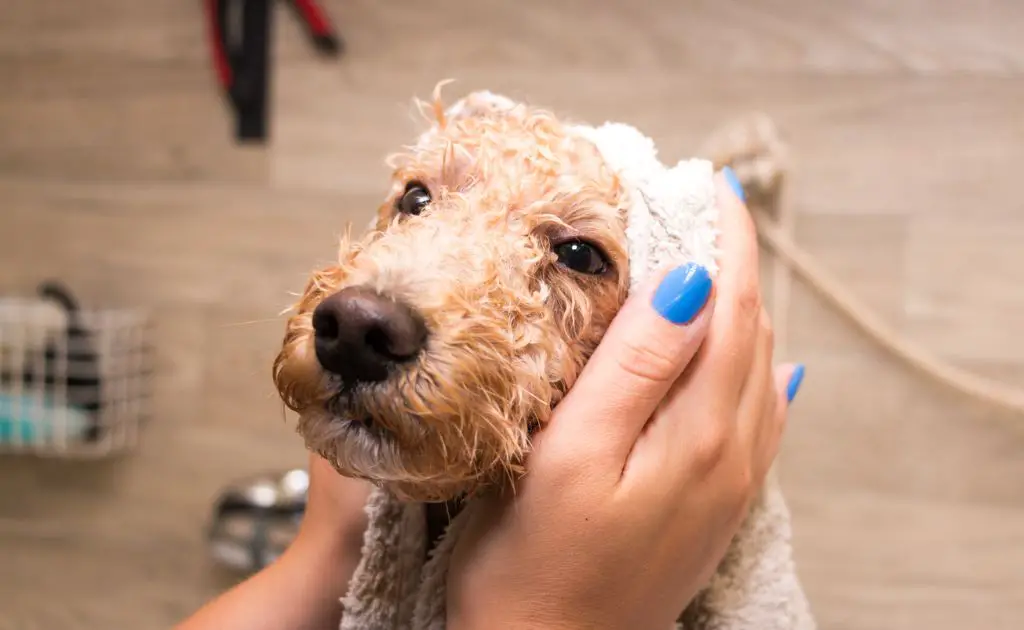Introduction
Dog whiskers, also known as vibrissae, are thick, specialized hairs that grow around a dog’s face, muzzle, above their eyes, and elsewhere on their body. Unlike regular dog fur, whiskers serve an important sensory purpose. They act as sensitive touch receptors that help dogs gather information about their surroundings. Whiskers detect subtle vibrations and air currents, even enabling dogs to “see” in the dark. This gives them a sort of sixth sense that allows them to navigate and explore their environment safely.
A dog’s whiskers provide a wealth of sensory information that helps them understand objects, spaces, and stimuli around them. But what happens when those whiskers are cut or trimmed? Can dogs feel their whiskers being removed? Let’s take a closer look at the anatomy and purpose of dog whiskers to better understand the potential risks and sensations associated with whisker trimming.
Anatomy of Dog Whiskers
Dog whiskers, also known as vibrissae, are located above a dog’s eyes, under the muzzle, and on the legs and paws (WebMD). Like cat whiskers, they are composed of keratin, the same protein that makes up hair, skin and nails. However, dog whiskers tend to be longer and thicker than cat whiskers.
On average, dogs have between 18-30 whiskers on each side of their muzzle (VCA Animal Hospitals). These whiskers are arranged in neat horizontal rows, with the uppermost row typically containing 4-5 whiskers. The rows below may contain up to 7 whiskers each. This orderly arrangement helps maximize sensory coverage for dogs.

Whiskers above the eyes (superciliary whiskers) account for about 20 individual hairs. Like cats, these aid dogs with spatial navigation. Leg and paw whiskers likely help dogs better sense their immediate surroundings.
Sensory Functions
A dog’s whiskers serve several key sensory functions. Whiskers are highly sensitive tactile hairs that aid dogs in perceiving their surroundings.
Whiskers help dogs detect touch and texture. The whiskers connect to nerves in the dog’s face and act similarly to human fingertips for sensing and touching. This allows dogs to gain spatial information and understand the environment around them (VCA Hospitals).
Whiskers also assist dogs with hunting and navigation. The placement and angle of the whiskers enable dogs to judge openings and pathways, and help guide their movements. This contributes to their ability to chase prey and move through tight spaces (PetMD).
In addition, a dog’s whiskers play a role in communication and facial expressions. Subtle whisker movements can indicate a dog’s mood and intentions. Pet owners often learn to read their dog’s emotions based on whisker positions.
Reasons for Trimming
Some owners trim their dog’s whiskers for hygiene and cleanliness purposes. They believe trimming helps keep food and debris from getting caught in the whiskers. According to Purina, trimming may help reduce stains around the muzzle in light-colored dogs.
Dog show handlers and breeders often trim whiskers for aesthetic reasons, to give the dog a neater appearance for the show ring. Many believe trimmed whiskers enhance the dog’s head and expression. According to Canidae, trimmed whiskers are considered part of the regular show grooming process.
In rare cases, trimming may be recommended to prevent further injury if the whiskers are damaged or broken. This allows the whiskers to regrow healthy and undamaged.
Some owners simply trim their dog’s whiskers based on personal preference and styles, without any specific hygiene, aesthetic, or medical reason. They may see untrimmed whiskers as messy or unkempt looking.
Potential Risks
Trimming or removing a dog’s whiskers does come with some potential risks that owners should consider before cutting them. Some of the main concerns around whisker trimming include:

Loss of spatial awareness/navigation – A dog’s whiskers play an important role in providing sensory feedback about their surroundings. Whiskers help dogs judge openings and navigate tight spaces. Removing them can cause temporary disorientation and loss of spatial judgment.
Trouble capturing prey – For dogs that hunt, whiskers aid in detecting and grabbing prey. Trimming could impair their ability to sense prey movements and accurately grab them.
Facial sensitivity changes – The follicles around whiskers are highly enervated, so removing whiskers may reduce sensation around the muzzle. This could temporarily alter facial touch sensitivity.
Stress/anxiety – Dramatic whisker trimming may be alarming and stressful for some dogs. It changes their normal tactile environment, which could cause apprehension or anxiety.
Trimming Sensations
Dog whiskers do contain nerves and blood vessels that extend partway along the whisker shaft, allowing dogs to feel sensory information through their whiskers [1]. However, the nerves and blood vessels don’t extend all the way to the tip of the whisker. This means dogs can likely feel some degree of sensation when their whiskers are trimmed, but it’s not likely to cause significant pain or discomfort [2].
The sensation of whisker trimming for dogs can be compared to human haircuts. Humans can feel the hair being cut due to nerve endings near the scalp, but the hair itself has no sensation. Similarly, dogs may feel some tugging or pressure sensations when whiskers are trimmed, but the whisker tips have no pain receptors [3]. As long as whiskers are trimmed properly without yanking or plucking, it’s unlikely to be painful or distressing for the dog.
Alternatives to Trimming
While some groomers advocate completely removing a dog’s whiskers, there are alternatives that allow dogs to keep most of their whiskers intact.
Regular grooming and brushing can help keep a dog’s face and whiskers neat without having to trim their whiskers down to the skin. Gentle brushing can detangle whiskers and allow you to trim any that are split or damaged without cutting off healthy whiskers.

Rather than removing the whiskers entirely, you can trim their length. Trimming the whiskers to around 1 inch allows the dog to retain some sensory function while tidying up their appearance. Only trim what is necessary based on the breed and situation.
It’s best to only trim split, cracked, or damaged whiskers as needed. Healthy whiskers are important for a dog’s sensory perception and should be left intact if possible during grooming.
When Trimming May Be OK
While it’s generally advised to avoid trimming your dog’s whiskers, there are some situations where a minimal trim may be acceptable if done properly:
Having a vet or professional groomer trim the whiskers – If whiskers need to be trimmed for a medical reason or for a specific breed’s show cut, it’s best to have an expert like a veterinarian or professional groomer perform the trimming. They know how to trim whiskers in a way that minimizes risk and stress for the dog.
Only trimming the very tips – If whisker trimming must be done, only the very tips should be snipped off, taking great care not to cut too short. The whiskers still need to retain some length to function.
Certain breeds and coat types – For breeds like schnauzers and poodles that require tidy facial grooming for shows, trimming may be unavoidable. The same may apply to dogs with curly or wiry coats that tend to get food and debris trapped in the whiskers.
With supervision and care – If whiskers are trimmed, it should always be done carefully, minimizing the amount taken off. The dog’s face should be held steady and calming reassurance given. Signs of stress may mean whisker trimming should be stopped or avoided in the future.
Trimming whiskers should only be done rarely and minimally, if ever. Unless medically advised or essential for a breed’s specific coat, it’s best to avoid whisker trimming altogether.
Signs of Whisker Stress
If you trim your dog’s whiskers, you should monitor them closely for any signs of stress or discomfort. Some common signs of whisker stress include:
Anxiety, hiding, shyness – Dogs rely on their whiskers for spatial awareness and sensory input. Removing them can cause disorientation, anxiety, and apprehension. You may notice your dog seeming more timid, hiding more often, startling easier, or acting uncharacteristically shy if their whiskers were trimmed.[1]

Navigational issues – Without their whiskers, dogs may bump into objects more often, have difficulty navigating tight spaces, or seem unsure of their surroundings. They use their whiskers similarly to a blind person’s cane to “feel” their way around.[2]
Appetite changes – Whiskers also provide sensory feedback that helps dogs gauge if they can fit their snout into bowls, bottles, or other containers. Removing whiskers could impact their ability to eat comfortably. You may notice a change in appetite or eating pace.
Excessive face touching/rubbing – The stumps of trimmed whiskers could cause irritation or sensitivity. Look for frequent pawing at the face or excessive rubbing and scratching if the whiskers were trimmed very short.
Pay close attention in the days and weeks after trimming your dog’s whiskers to watch for any concerning behavioral changes. If you notice signs of stress, anxiety, or disorientation, consult your veterinarian. It’s best not to trim whiskers unless truly necessary.
Conclusion
In reviewing the key learnings around dog whiskers, it’s clear they serve important sensory functions for dogs. The whiskers provide tactile information about their surroundings and environment. However, occasional trimming likely poses limited risks if proper care is taken and alternatives are considered first.
While whiskers shouldn’t be trimmed frequently or excessively, limited trimming may be acceptable in some situations after exploring other options. Signs of whisker stress should be monitored and trimming halted if the dog exhibits discomfort or changes in behavior.
Overall, whiskers provide dogs with useful sensory information but limited trimming with proper care and technique does not appear to pose major welfare risks. Being mindful of the whiskers’ role and considering alternatives to trimming whenever possible is recommended.